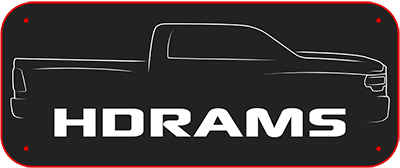but that would need to be for a set duration of time?
The reason I am asking is because I have the “exhaust filter full - power reduced” warning on my dash. Which it telling me that for some reason the ECM is not capable of initiating an “active” regen.
So in theory, I should be able to clean the filter via a passive regen? basically burning the soot out myself? Contrary to what the warming says, I seem to have no problem getting up to 80MPH.
I have a 10hr trip coming up next week. was thinking of taking the Ram to passively clean the exhaust filter. What are the chances the ECM shuts me down somehow?
If you’re getting the filter full message, that could be due to DTC P242F being active.
P242F means the truck sees the particulate filter is full, and is estimating that the blockage is a result of
ash.
There are two compounds that will “fill” a DPF.
Soot and
ash
Soot is unburned hydrocarbons (mostly fuel). The soot is what’s being removed anytime you have active or passive regeneration occurring. Soot builds up much more quickly than ash, and is regularly generated and removed during the life of the DPF
Ash is another byproduct of combustion. Ash is what remains after the soot has been burned away through regeneration. Ash is mostly a result of the additives and metals in engine oil that are used as friction barriers. The ash is not combustible, therefore it does not burn away during regeneration. It will slowly build up over time, plugging the individual pathways within the DPF filter media. This build up slowly changes the differential pressure reading of the DPF over time as it continually builds up. Eventually there’s enough ash build up (and therefore restriction) to the point the truck can no longer adequately maintain the DPF. Hence P242F.
When P242F is set, in most cases, it can not be cleared simply by resetting trouble codes. When it is active, it also inhibits Active regeneration from occurring. The truck isn’t going to pass fuel downstream to burn out a non-combustible blockage. There are only a few ways around P242F. If it’s a false reading (which can happen for a number of reasons) you can sometimes go into the ECM and erase the historical DPF data, reset the regenerative filter timers, and then initiate a forced (parked) regeneration cycle to try and burn out the filter. This works sometimes. Not all the time. Sometimes, if ash is legitimately blocking the filter, you can take it to a specialist that can wash the ash out using chemicals and high pressure water, as well as a long bake in a specialized oven. This process is more difficult to achieve with the DPF’s on our trucks as they were never designed or built to be serviceable, like the commercial ones are in large trucks and equipment. Our trucks have the DOC / DPF all in one continuous piece. Whereas commercial trucks and equipment have them as separate removable and serviceable components. There are some who have made these cleanings work through various uncommon methods and had success. I read a story not long ago where a welder actually cut his DPF open, cleaned the ash out, and then welded it back together. Once it’s cleaned, the same method of clearing historical data and resetting regenerative filter timers must be completed.
The only other way around a legitimate P242F is a complete DPF replacement.
You can inspect the DPF inlet with a small borescope if you have access to one. Ash restriction is visible on the face of the inlet as whiteish colored powder that is stuff into all the small pores in the DPF.
